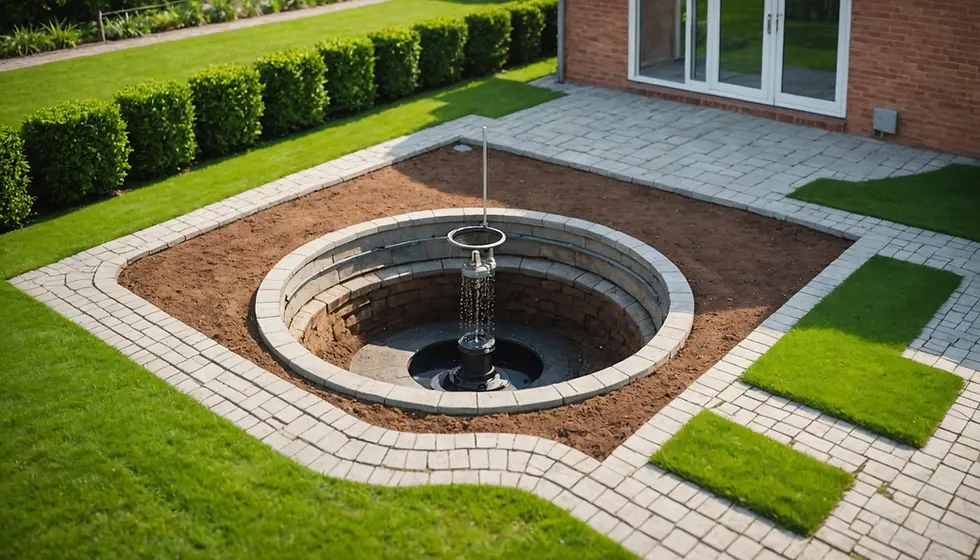How to Measure Your Lawn for New Sod: Get the Right Amount Every Time!
- Garrett Williams
- Jan 19
- 4 min read
Updated: Jan 26
When it comes to rejuvenating your lawn or adding a touch of green to your home, sod can be an excellent solution. However, figuring out just how much sod you need isn't always straightforward. You definitely want to avoid under-ordering or over-ordering, which could impact your lawn's health and your budget. Let’s delve into the steps to accurately estimate the square footage of sod required for your project.
Understanding Your Lawn's Shape
Before you can calculate the square footage, take a good look at your lawn. Is it a simple rectangle or oval? Or does it have a more complex shape?
If your lawn is made up of simple geometric shapes like rectangles and circles, it will be much easier to calculate the area. In case it's more irregular, consider breaking it down into smaller shapes.
Once you've mapped out the different sections, you’ll be ready to take measurements.
Taking Accurate Measurements
Once you've identified the shapes in your lawn, grab a tape measure and start measuring! Here’s a simple guide for basic shapes:
Rectangles: Measure the length and width and multiply them together.
Circles: Measure the radius and use the formula below: 3.14 times the Radius squared
Triangles: Measure the base and height, then use this formula:
Base x Hight Divided by 2 = Area
Irregular Shapes: For complicated areas, you can either use graph paper to sketch and count the squares or apply the “counting method” where you break the area into simple shapes, measure them, and sum their areas.
Don't forget to measure in feet for consistent square footage calculations!
Calculating Total Square Footage
Now that you have all your measurements, it’s time to calculate the total square footage. Add all your calculated areas together.
For example, if you have a rectangular area measuring 20 feet by 15 feet, and a circular area with a radius of 5 feet, your calculations would look like this:
Rectangle:
20ft times 15ft = 300 sqft
Circle:
Pi times 5 squared = 78.54 sqft
Now, add them together:
300 + 78.54 = 378.54 sqft
Make sure to round up! It's better to have a little extra sod than not enough.
Account for Sod Delivery and Waste
When ordering sod, it’s essential to account for potential shrinkage and waste. Typically, you should add 10–15% to your total square footage to cover imperfections in the rolls, cutting, and any adjustments you might need to make.
Let’s say your total is 378.54 sq ft. Adding 10% would result in:
378.54 x 1.1 = 416.39 sqft
Now you know you’ll need sod for approximately 420 sq ft.
Selecting the Right Sod
In Arkansas, there are various types of sod you might consider based on your specific needs and lawn conditions. For instance:
Bermuda Grass: Great for sunny areas, this drought-resistant option thrives in warmth.
Fescue: Ideal for cooler regions, fescue is shade tolerant, making it perfect for partially shaded areas.
Before purchasing, it’s advisable to check with your local sod suppliers in places like Little Rock Arkansas or Conway Arkansas for the best options available for your lawn replacement project.
Getting a Cost Estimate
Once you have your estimated square footage, you can request a free quote from local sod vendors. Prices can vary significantly based on the type of sod and local availability, so it's a good idea to compare options.
Keep in mind that beyond just the sod itself, you might need to factor in additional costs such as delivery and installation.
Preparing Your Lawn for Sod Installation
Before laying down your sod, ensure that your lawn is properly prepped. This includes removing weeds, debris, and any old grass. Leveling the ground and adding soil amendments can make a significant difference in the success of your sod installation.
If you’re unsure about how to prepare your soil or the installation process in general, consider reaching out to a landscaping professional or checking out local gardening resources for guidance.

Enjoying Your New Lawn
After all your hard work, it’s finally time to lay the sod! Follow the installation instructions provided by your supplier for the best results. Proper watering and maintenance in the first few weeks are crucial for your new lawn to establish roots effectively.
Now that you know how to estimate the square footage of sod, you can tackle your lawn project with confidence. By measuring correctly, selecting appropriate sod, and preparing your lawn adequately, you set yourself up for success. Enjoy your beautifully green and lush lawn for seasons to come!
Conclusion
In summary, estimating the square footage of sod for your lawn doesn't have to be a daunting task. By understanding your lawn's shape, taking accurate measurements, accounting for waste, selecting the right type of sod, and getting a cost estimate, you are well on your way to achieving a stunning new lawn. Happy sod installing, and may your grass always be greener on your side of the fence!




Comments